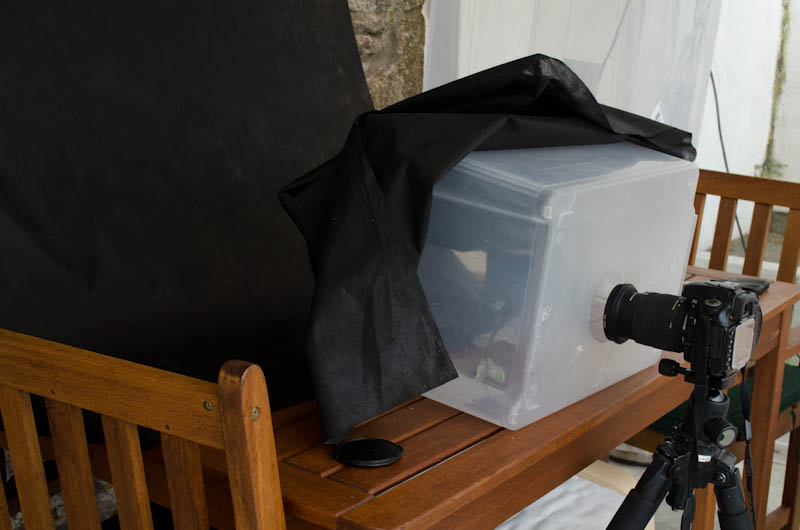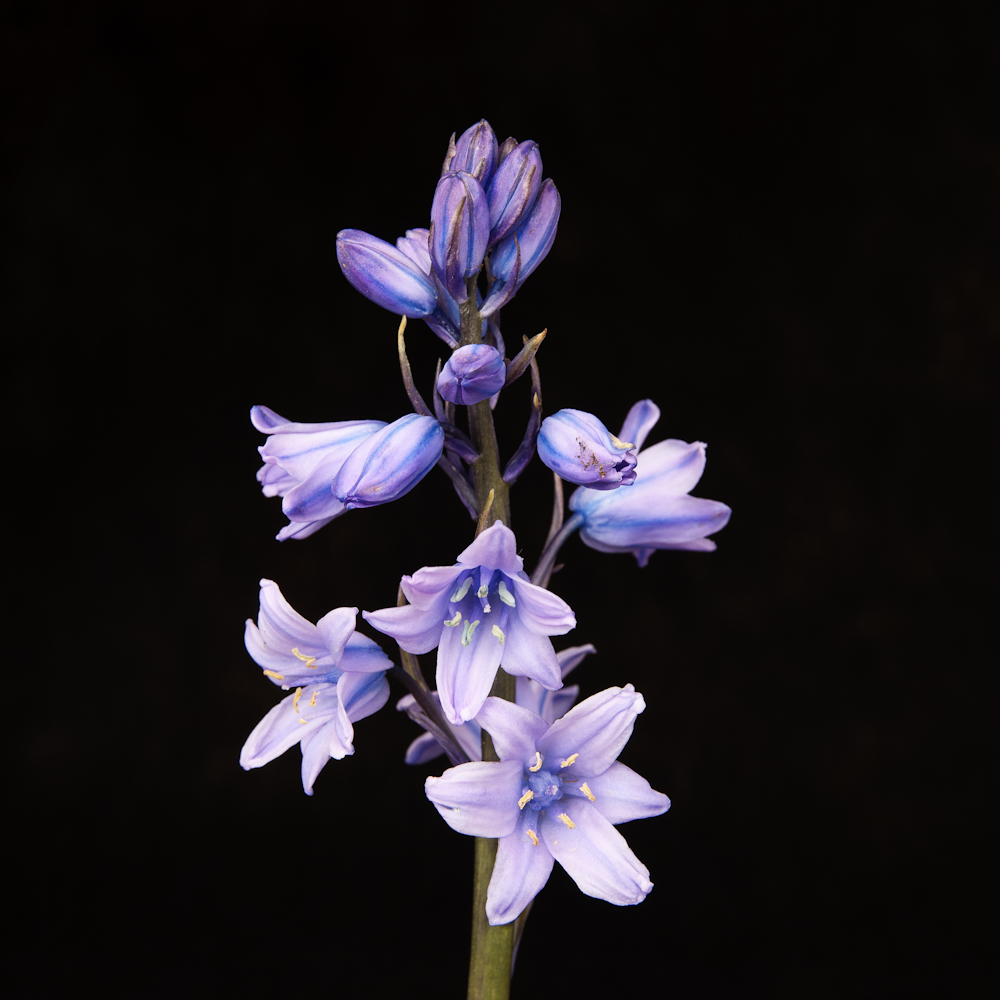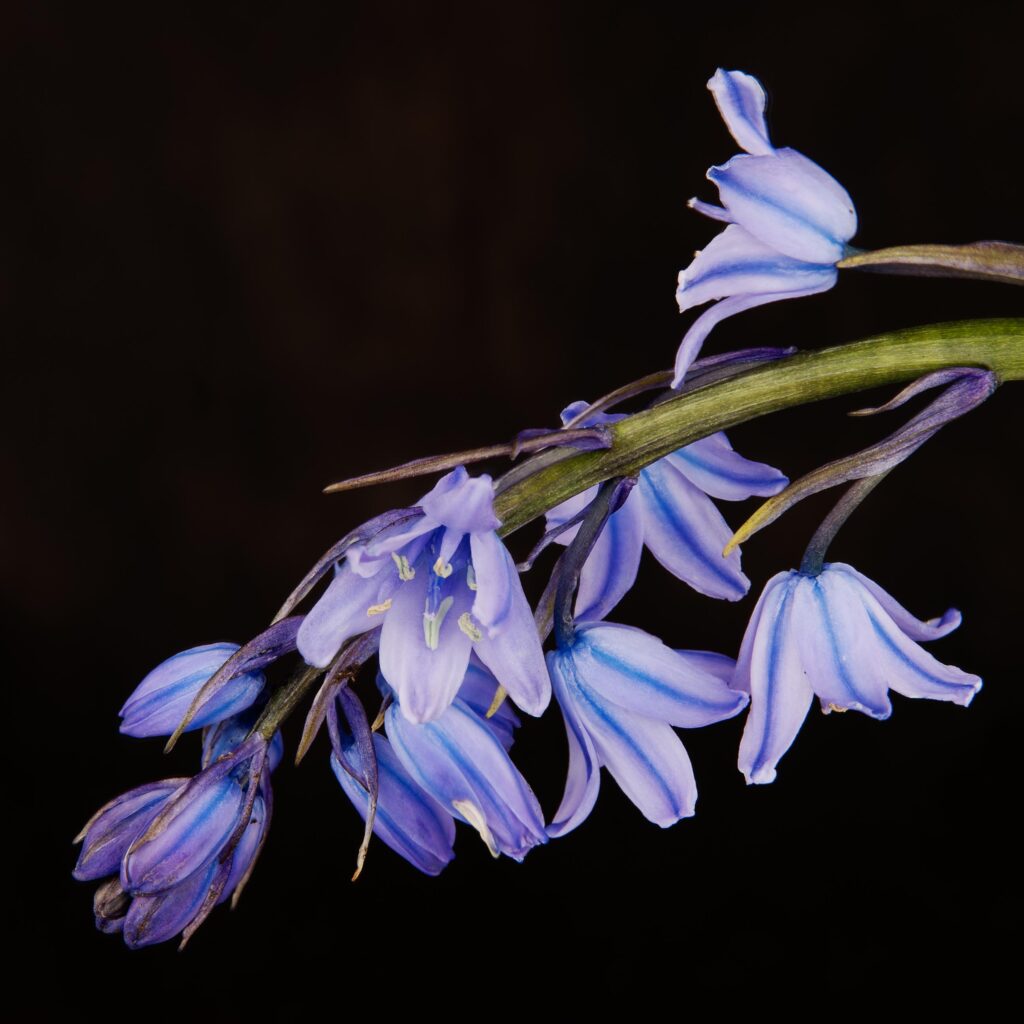In my last ‘Country Life’ blog entry I mentioned that we had decided to start to identify and record as much Flora and Fauna on our policies.
At the time it was just going to be a rather boring list of species, but I though it would be interesting to combine what I know about photography and what I don’t know about macro photography, to try to image our various finds.
Now while that was quite easy to say, it’s going to be quite a challenge methinks – as the following pictures will show.

Having done a bit of still life in the studio, I wanted the subject to be in front of a dark background. The light on the subject needs to be diffuse but well illuminated, but the background doesn’t. For the diffuser, we found a semi transparent bin and cut a hole in the base into which the lens is poked through.
The only black material we had was some weed control fabric, so this forms the background as well as blocking light from falling on the background. The Bin was a little too small and split when it was cut, so down to B&Q we went and got the bigger bin below.

This setup seems to work really well. The background is sufficiently dark compared with the subject and the bin size is large enough to take the larger specimens that we are sure to come across.
I have an idea of using a dark opaque bin, which will form the background as well as the background shade, into which the clear bin will telescope. This should avoid the need to use the fabric and, I hope, be quicker to set up.
OK. So does this set up work?

This was the first attempt. A Spanish Bluebell ( Hyacinthoides Hispanica) a rather unwelcome guest in these parts, but I have seen the native Hyacinthoides non-scripta in one of our fields, so there are some around.
This was shot at f/11 and get pretty much all of the plant in focus. But at a different angle the front to back distance in the next image was greater, so I resorted to taking three images, manually focused on various points. These images were then loaded into a super bit of software called Helicon Focus, which adds all the sharp bits of each image and rejects as many ‘out of focus’ parts it can. The following composite is the result.

Whilst not perfect, I can see the sharp portions of the individual shots being correctly aligned and showing in the final image, so we have a good start. I’m sure things will get a little more difficult when the subject gets smaller and the ‘In Sharp Zone’ get narrower…EAK!!!